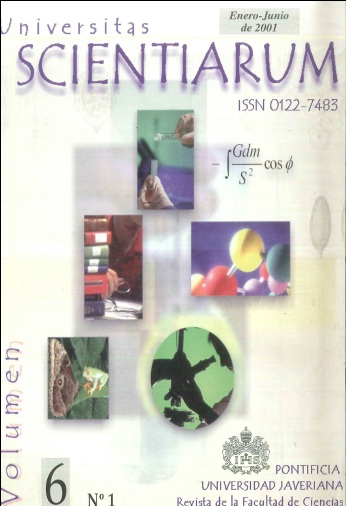Abstract
With the intention of determining the presence of E. coli 0157 in foods, in the North zone of the Sabana of Bogotá, 300 artisan meat and milky product samples were analyzed. For their isolation and identification two techniques were used; a traditional one where after six hours of incubation in water peptonada to suplementada 1% with novobiocina (20 mg!L) boards of agar Mac Conkey Sorbitol inoculated. By means of this technique Esclzericlzia coli 0157 from a single sample (0.33%) of 300 analyzed the corresponding one to a meat derivative (hamburger); also E. coli in 1.6% was identified. Sirnultaneously a fast technique with Fluorocult, Agar for E. coli O 157: H7 and of the three hundred isolated samples microorganisms like Esclzericlzia coli 0157 (0.33%), E. coli (25%), Slzigella sonnei (10%), E. aerogenes (9%), P. mirabilis ( 4% ). Of the two tried techniques these presented/displayed the same percentage of recovery of Esclzericlzia coli 0157. The fast method, using Fluorocult, Agar for E. coli 0157: H7 allowed to obtain presuntivos results in 24 hours and confirrning results in 48 hours. In resistance the traditional method using to agar Mac Conkey Sorbitol allowed to obtain presuntivos results in 24 hours and confirmíng results in five days. The methods and used techníques allow that thís study can reproduce easily with precise results.
Univ. Sci. is registered under a Creative Commons Attribution 4.0 International Public License. Thus, this work may be reproduced, distributed, and publicly shared in digital format, as long as the names of the authors and Pontificia Universidad Javeriana are acknowledged. Others are allowed to quote, adapt, transform, auto-archive, republish, and create based on this material, for any purpose (even commercial ones), provided the authorship is duly acknowledged, a link to the original work is provided, and it is specified if changes have been made. Pontificia Universidad Javeriana does not hold the rights of published works and the authors are solely responsible for the contents of their works; they keep the moral, intellectual, privacy, and publicity rights. Approving the intervention of the work (review, copy-editing, translation, layout) and the following outreach, are granted through an use license and not through an assignment of rights. This means the journal and Pontificia Universidad Javeriana cannot be held responsible for any ethical malpractice by the authors. As a consequence of the protection granted by the use license, the journal is not required to publish recantations or modify information already published, unless the errata stems from the editorial management process. Publishing contents in this journal does not generate royalties for contributors.



